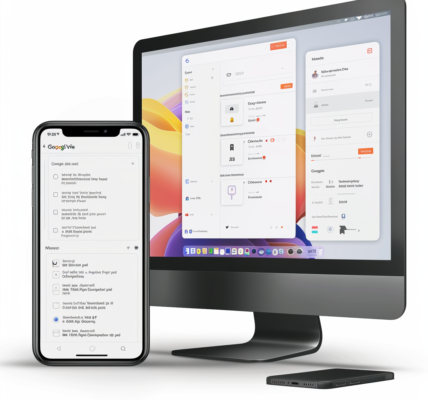The ionosphere, a dynamic layer of charged particles in the Earth’s upper atmosphere, has long been a subject of scientific interest. Recent advancements in technology have opened new avenues for understanding this complex region, particularly through the use of mobile devices. A groundbreaking study has emerged, showcasing how aggregated measurements from millions of Android smartphones can provide detailed insights into the ionosphere’s behavior.
The ionosphere is significantly influenced by solar radiation, which interacts with atmospheric gas molecules, resulting in the release of electrons and the formation of ions. This process creates variations in free electron density, which can lead to errors in satellite navigation systems like GPS. These fluctuations are affected by various factors, including seasonal changes, time of day, and geographical location, particularly in relation to the equator. Moreover, intense solar storms can cause substantial disruptions to satellite communication and navigation, as evidenced by the notable solar storms in May 2024 that produced breathtaking auroras across the globe.
In a recent publication in the prestigious journal Nature, researchers have unveiled a novel approach to mapping the ionosphere by leveraging the power of mobile technology. By utilizing sensor data from millions of Android devices, the study demonstrates that a crowdsourced network can achieve a level of accuracy in ionospheric mapping that rivals, and in some regions, surpasses traditional monitoring methods.
While individual mobile phones may produce erratic readings, the aggregation of data from countless devices forms a highly sensitive scientific instrument. This innovative method not only enhances the accuracy of ionosphere mapping but also prioritizes user privacy by ensuring that no individual devices are identifiable in the process. This is particularly advantageous in areas like India, Southeast Asia, and central Africa, where there is a high prevalence of mobile phone usage but a lack of conventional monitoring stations.
The implications of this research are significant, especially regarding improvements in GPS accuracy for Android users. By understanding current ionospheric conditions, GPS receivers can minimize location errors by several meters. This enhanced precision is crucial in various scenarios, such as emergency response, where distinguishing between a highway and a nearby rugged road can determine the swift arrival of first responders to the right location.
Additionally, the data collected from mobile phones offers valuable insights into scientifically important features of the ionosphere, providing unprecedented detail in regions that are typically underserved by monitoring infrastructure. As global awareness of the potential risks associated with solar storms increases, the ability to map the ionosphere using smartphone sensors could prove invaluable for understanding and mitigating the effects of these phenomena.
The stunning visual displays of auroras serve as a reminder of the ionosphere’s intricate relationship with solar activity. By harnessing the collective power of mobile technology, researchers are not only advancing scientific knowledge but also enhancing practical applications that can benefit society as a whole.





